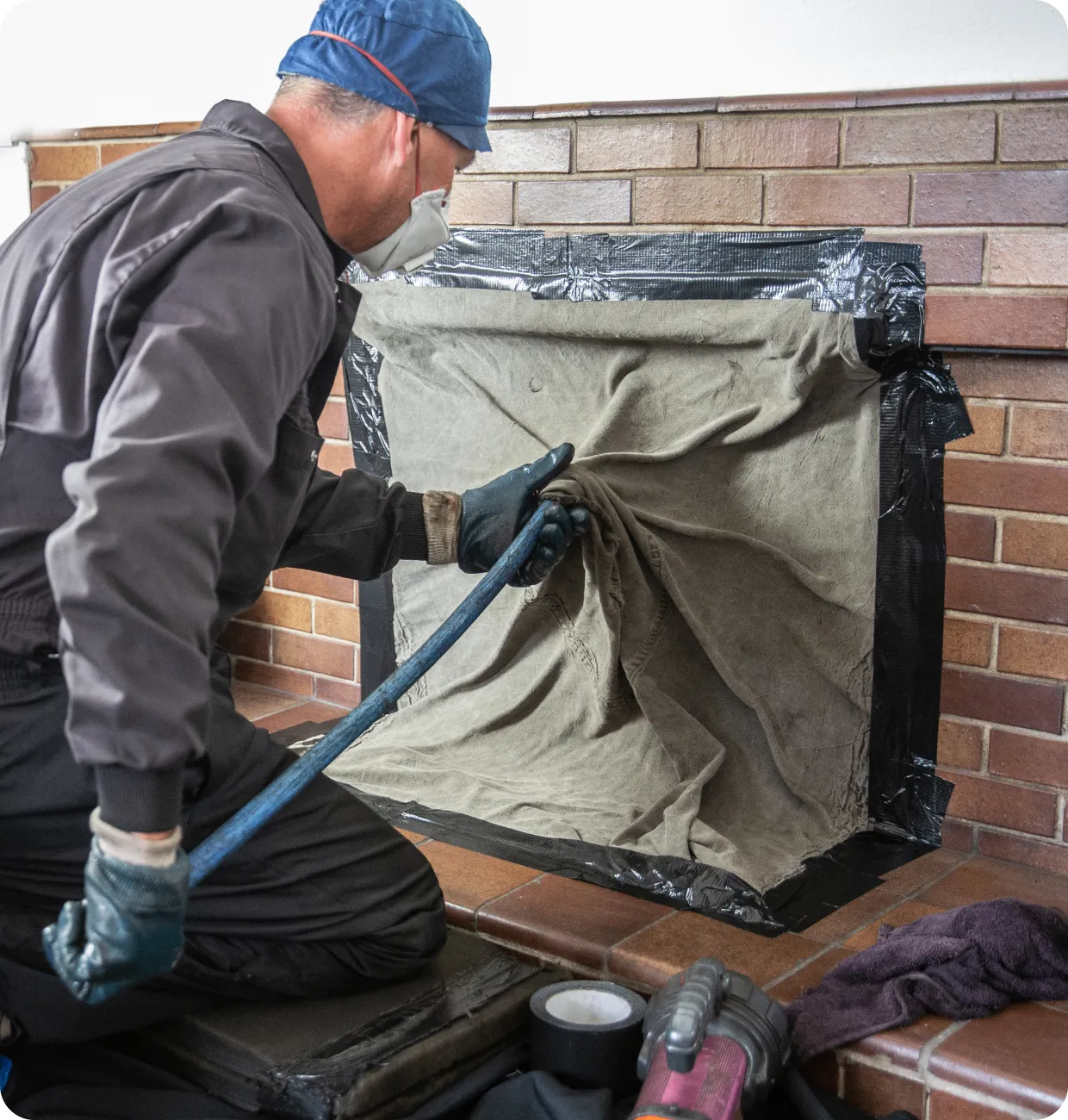
Common Questions About Chimney Sweeping & Repairs
Neat Sweeps knows that keeping your chimney in top condition comes with plenty of questions. Check out our FAQs below for helpful advice on chimney sweeping, maintenance, and safety.
Frequently Asked Questions
If it has been used but not swept within the past 12 months, it should be swept as soon as possible for safety reasons. If it has not been used since it was last swept and the possibility of a bird’s nest can be ruled out (if there is a cage or cowl on the chimney), the issue could be due to cold or weather conditions. Please call us, and we may be able to advise on the appropriate action to take.
Very little!
- Remove ornaments and other items from your fireplace.
- Ensure that the fire/appliance is fully out and cool.
- Empty the stove/fireplace of ash before we arrive to save time.
- Allow easy access to a socket, Provide some ventilation, Remove discarded tissues or other bio-hazard material.
Clear an area of about 2 metres squared in front of the fireplace.
You can expect:
- All work carried out to the Industry Code of Practice.
- A visual inspection of the chimney stack and chimney terminal.
- The sealing of the fireplace with specially made soot sheets or sponge blocking.
- A full brush and clean of the flue.
- Removal of any debris and soot.
- A smoke evacuation test.
- Issuing of a chimney sweeping certificate that covers Building Regulations compliance.
- Repairs completed where possible.
We take every precaution to ensure a mess-free service. The area around the fireplace is always covered with sheets to prevent soot spillage. We also use high-powered vacuum cleaners with twin motors and specialist HEPA bags to prevent soot dust from circulating in the room.
In the very unlikely event of an accident or mishap, Neat Sweeps carries public liability insurance up to £5M.
Industry guidance and Hampshire Fire and Rescue Service recommendations:
- Solid fuel appliances – Once a year for smokeless fuel; twice a year if using coal.
- Wood-burning appliances – Every three months when in use.
- Gas appliances – Once a year if designed for sweeping.
- Oil-fired appliances – Once a year.
Yes. Firstly, birds and their eggs are protected under the Wildlife and Countryside Act 1981 and cannot be removed during the nesting season. We will not remove bird’s nests between 1st March and 31st August.
Secondly, nests are very messy and time-consuming to remove. The process involves passing a specialist brush head up and down through the chimney flue to ensure all debris is cleared. A CCTV camera is used to confirm that all debris is removed. It’s common to remove several bin bags worth of debris, which is why we charge more for this service.
Seasoned, dry wood is always best, but the type of wood also makes a difference. Some woods are unsuitable, such as treated wood, which can release toxic chemicals when burned. Others, like Laburnum, are actually hazardous to your health, as they produce poisonous fumes that can be harmful if inhaled.
The classic Firewood Poem from the 1930s gives a great guide on the best and worst woods to burn.
